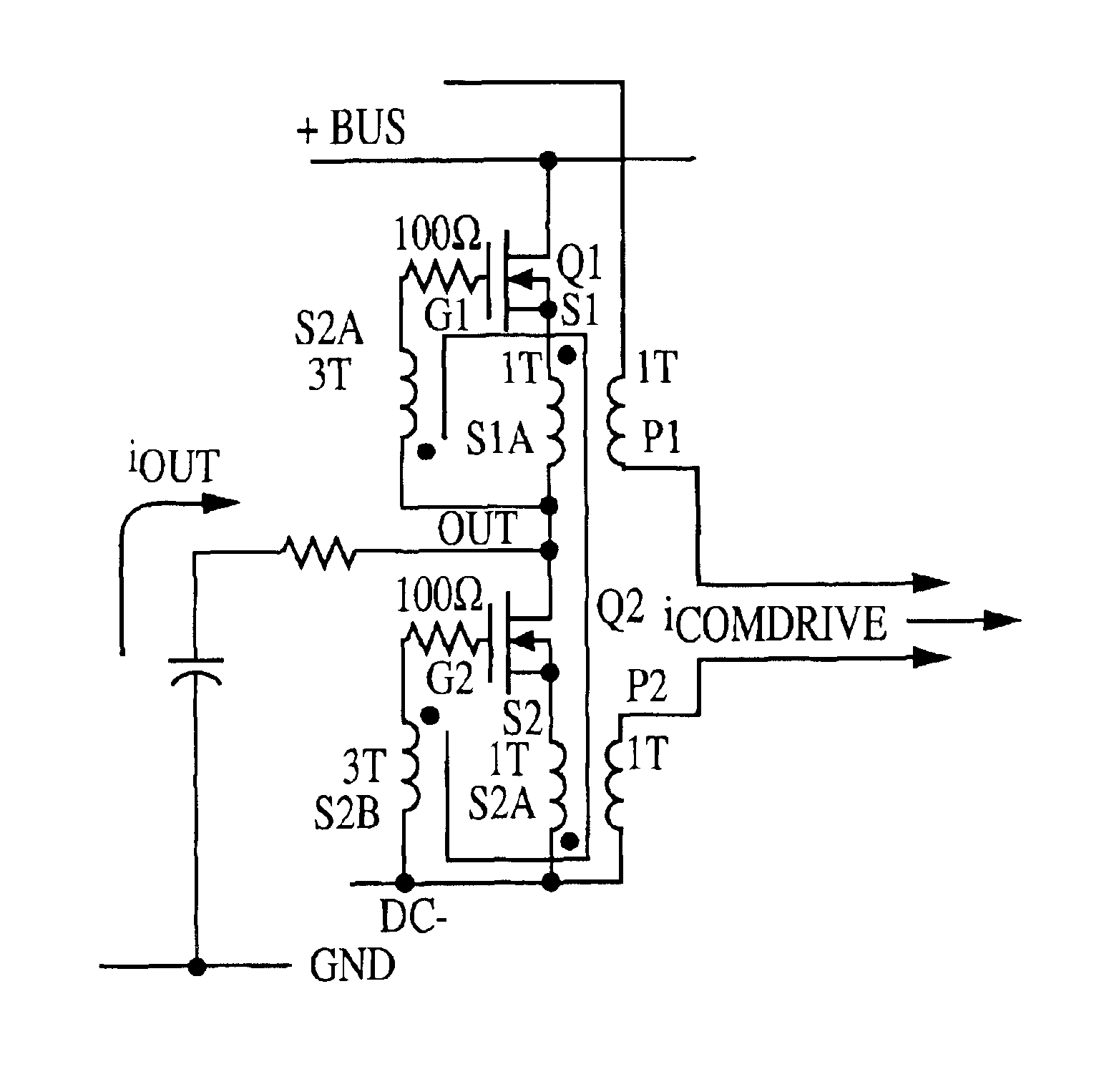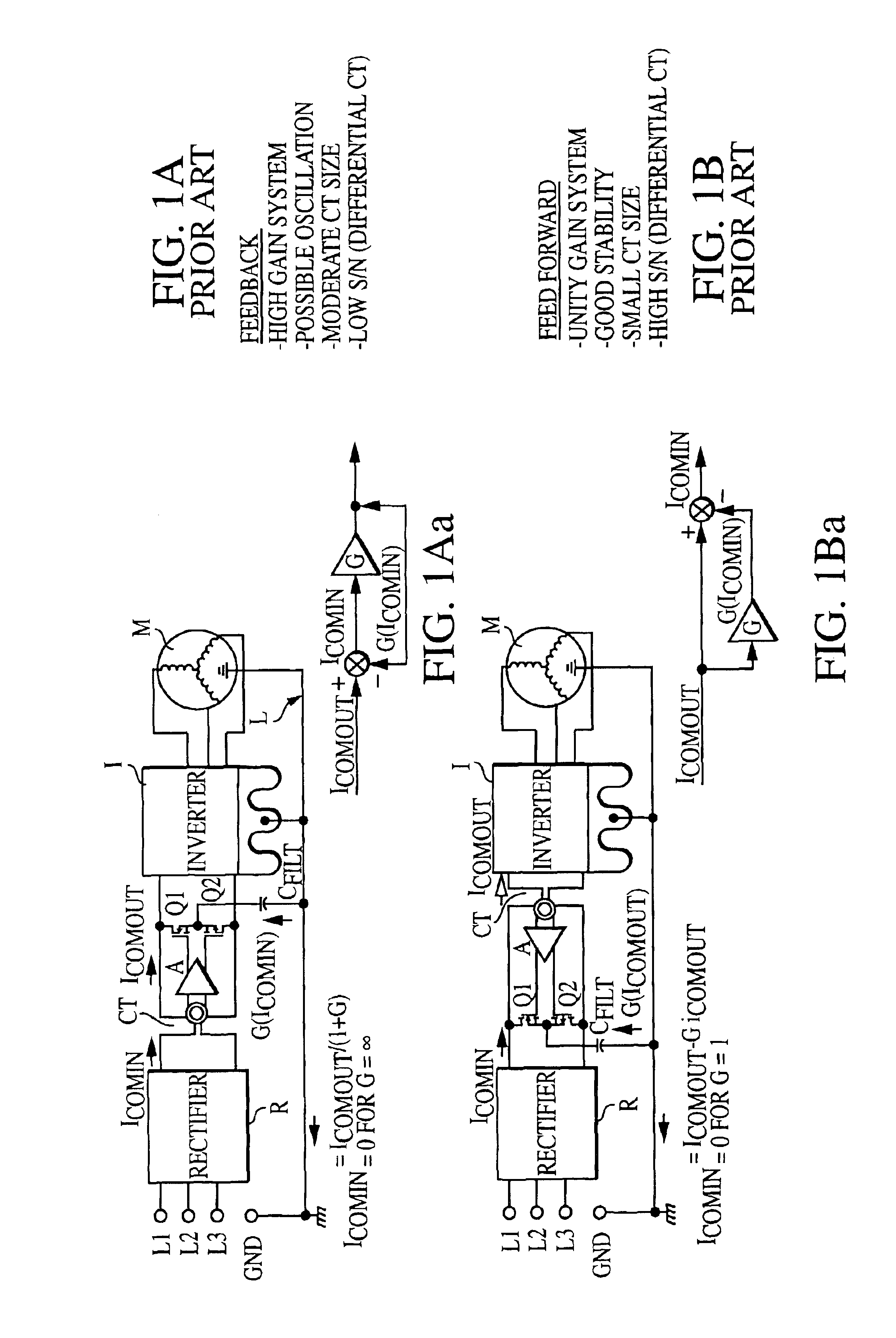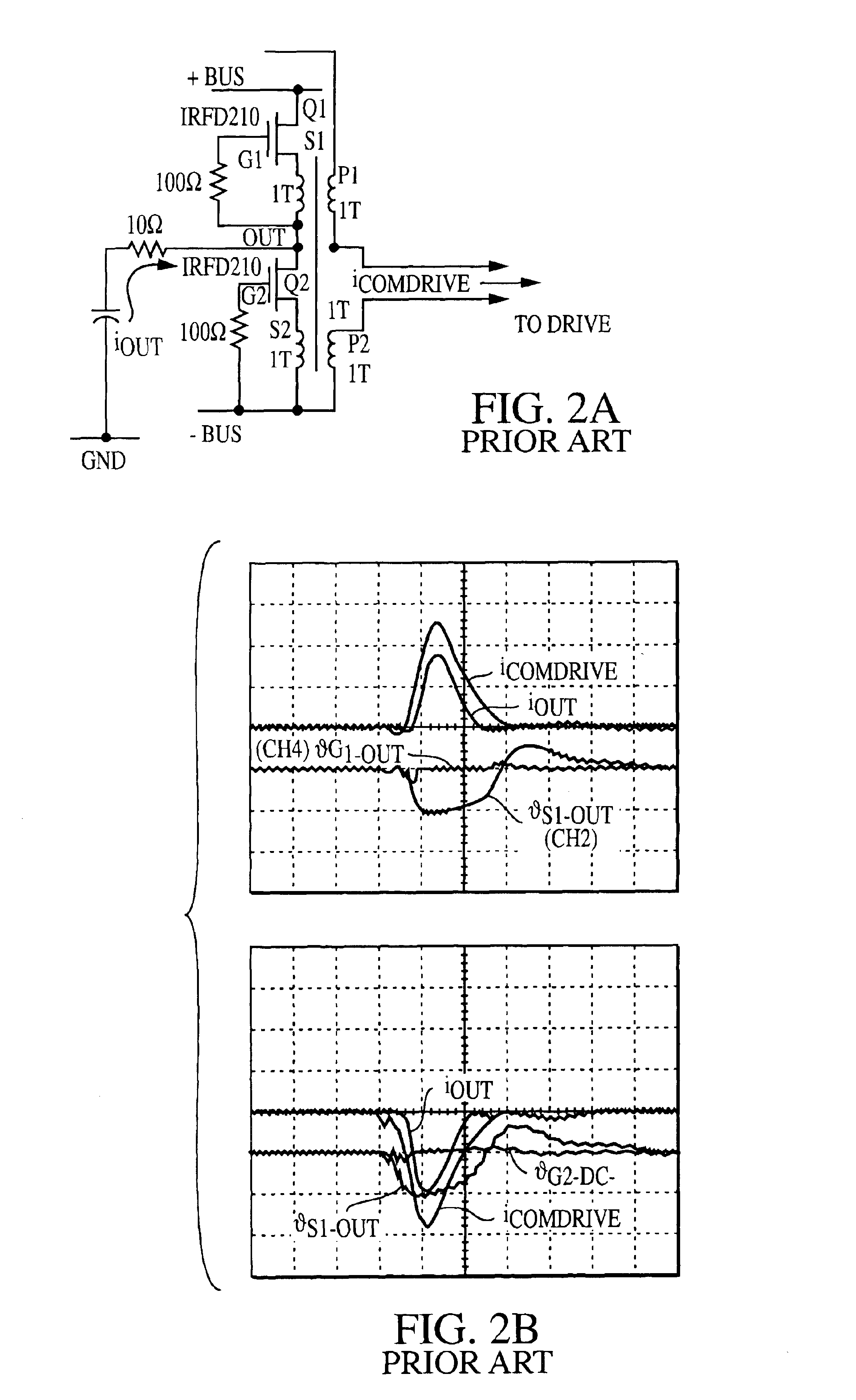Active common mode EMI filters
a filter circuit and common mode technology, applied in the direction of dc circuit to reduce harmonics/ripples, pulse manipulation, pulse technique, etc., can solve the problems of reducing affecting the efficiency of emi filter circuits, and creating unnecessary noise currents and harmonics on ac lines, etc., to achieve more effective filtering action, reduce common mode noise, and reduce bias power supply voltage
- Summary
- Abstract
- Description
- Claims
- Application Information
AI Technical Summary
Benefits of technology
Problems solved by technology
Method used
Image
Examples
first embodiment
The proposed solution that allows a single turn primary is illustrated in FIG. 4(a). The primary windings P1 and P2 (of “large” diameter wire) and secondary windings S1A and S2A (of “small” diameter wire), each have one turn, thus fulfilling the requirement for just a single turn primary. “Overwindings” S1B and S2B, also of “small” diameter wire, are added, to boost the voltage applied between gate and source of the MOSFET, relative to the primary voltage.
Since the required gate-source drive voltage for a given primary current is fixed by the characteristics of the MOSFET, the voltage across each primary winding is now reduced in the ratio of 11+N,
where N is the number of “overwind” turns on S1B and S2B relative to the number of primary turns. Thus, the magnetizing current error is reduced in the same ratio.
FIG. 4(b) shows waveforms of iCOMDRIVE and iOUT, with one primary turn and N=3. The error between iOUT and iCOMDRIVE has been significantly reduced, as compared with the waveform...
second embodiment
The second embodiment is illustrated by the example in FIG. 5. Here, there are 10 secondary turns on the 1-turn primary sensing transformer, CT1. The relative magnetizing current error is thus {fraction (1 / 10)} of what it would be with just a single secondary turn on the same core. The current that flows in the secondary SA, and in the 100-turn primary winding of a second small current transformer CT2, is thus a relatively accurate replica of the primary current, but with amplitude of one tenth of the primary current. CT2 carries only “common mode” current, therefore it has small wire size for both primary and secondary windings.
CT2 has 10 secondary turns. Thus, the secondary current of CT2 is 10× the primary current, and the current gain of the overall circuit from iCOMDRIVE to iOUT has the desired value of unity.
The voltage reflected to the primary of CT2 is 10× the base-emitter voltage of Q1 / Q2 i.e. about 10V. Assuming CT2 has the same cross section as CT1 (but not necessarily as...
third embodiment
FIG. 6 is a basic diagram of a noise powered noise canceling active EMI filter. The active filter method is based on the feedforward noise canceling method of FIG. 1B. FIG. 7 is a basic diagram of a noise powered noise canceling filter based on the feedback noise canceling method of 1A. The floating bias power supply provides bias voltage to the active EMI filter amplifier in either the feedback or the feedforward circuit. The embodiments of FIGS. 6 and 7 each include a CT which has a winding for noise sensing that is separate from the winding for the floating power supply.
In FIGS. 6 and 7 the noise powered active EMI filter is applied to AC motor inverter system. In both cases, the AC line is three phase input (L1, L2, L3) along with ground terminal, GND. It can be a single phase AC line as well. In general, the noise powered active EMI filter can be applied to any system which contains power switching device(s) and / or forms a power inverter such as a switch mode power supply, unin...
PUM
 Login to View More
Login to View More Abstract
Description
Claims
Application Information
 Login to View More
Login to View More - R&D
- Intellectual Property
- Life Sciences
- Materials
- Tech Scout
- Unparalleled Data Quality
- Higher Quality Content
- 60% Fewer Hallucinations
Browse by: Latest US Patents, China's latest patents, Technical Efficacy Thesaurus, Application Domain, Technology Topic, Popular Technical Reports.
© 2025 PatSnap. All rights reserved.Legal|Privacy policy|Modern Slavery Act Transparency Statement|Sitemap|About US| Contact US: help@patsnap.com



